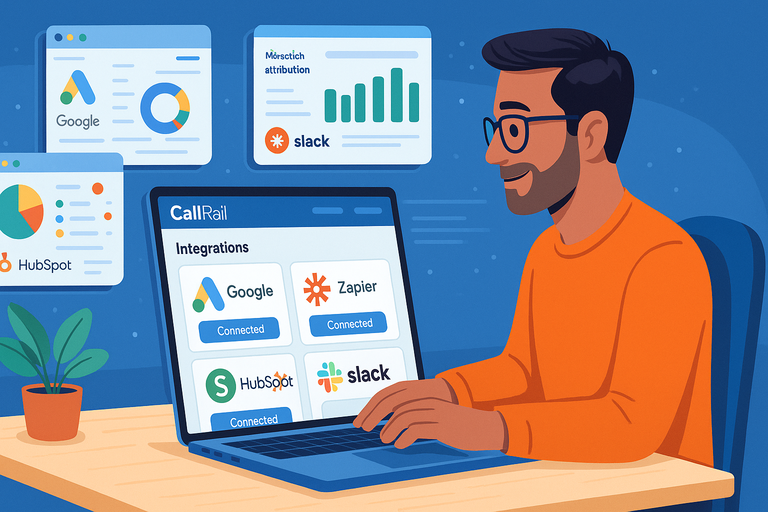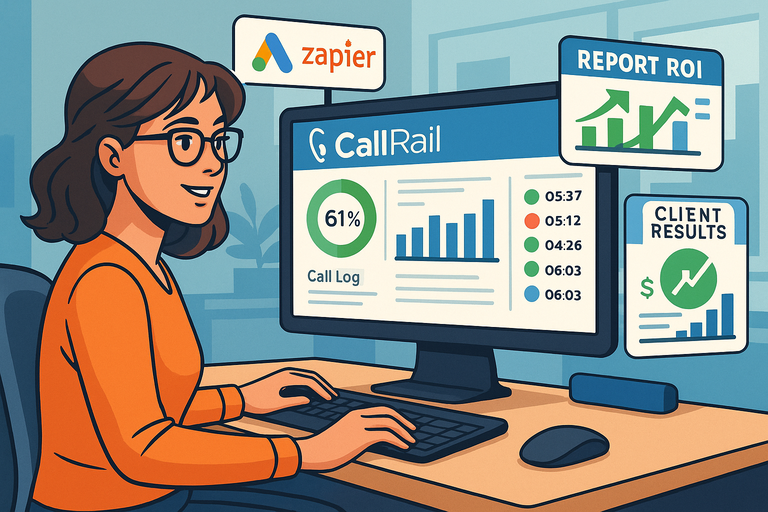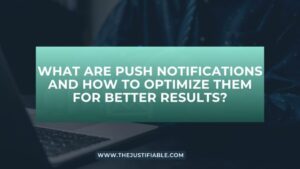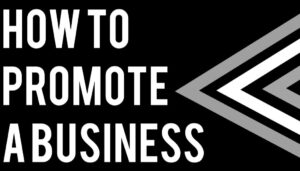Table of Contents
The CallRail app has completely changed the way I look at tracking client calls and understanding campaign performance. If you’ve ever felt unsure about where your leads are really coming from or how to prove marketing ROI to clients, you’re not alone.
The CallRail app makes that process not only easier but smarter. But what exactly makes it so valuable for agencies—and how can it help you deliver measurable results to your clients while saving time?
Let’s dig into why I recommend it and how it can strengthen your agency’s operations from the ground up.
How The CallRail App Simplifies Call Tracking For Agencies
The CallRail app is like a truth detector for marketing campaigns. It gives agencies real, verifiable proof of what’s working — and what’s not — by linking every phone call back to the source that drove it.
Whether you’re running PPC ads, social campaigns, or SEO efforts, CallRail connects those activities directly to customer calls and conversions.
Call Tracking That Connects Marketing To Results
If you’ve ever had a client ask, “Which ad actually brought in this lead?” you know how crucial call tracking is. The CallRail app answers that question automatically.
Here’s how it works in practice: When someone clicks an ad and calls your client’s business, CallRail logs the exact marketing source — Google Ads, Facebook, a landing page, even a local SEO listing.
You’ll see this inside your CallRail dashboard under Activity > Calls, where each call shows the campaign, keyword, and referring URL.
This means you can walk into client meetings with confidence. Instead of saying, “We think this ad worked,” you can show them proof — actual call data that ties back to marketing activity.
Pro Insight: I suggest setting up unique tracking numbers per channel (for example, one for Google Ads, one for organic search). It’s the fastest way to pinpoint which marketing efforts actually drive calls.
Dynamic Number Insertion For Accurate Attribution
Dynamic Number Insertion (DNI) is one of those CallRail features that feels like magic — but it’s actually brilliant logic. When someone visits your client’s website, the phone number they see changes automatically based on where they came from.
For instance, a visitor from Facebook might see one number, while a visitor from Google Ads sees another. This allows CallRail to attribute each call to the exact source and campaign.
How to set it up: From your dashboard, go to Numbers > Create Number > Dynamic Number Insertion, and follow the guided setup. CallRail’s JavaScript snippet handles the rest on your website.
The best part? You get 100% accurate data — no more guessing where leads originated. I’ve seen agencies use DNI to discover that half their “direct” leads were actually coming from paid search, just not properly tracked before.
Ready to see where your clients’ best leads really come from?
[Try the CallRail app free for 14 days →]
Centralized Dashboard For Client Campaigns
Managing multiple clients is chaotic enough. The CallRail dashboard brings calm to that chaos. From one screen, you can view every client account, their active numbers, call volume, and conversion data.
The Agency View inside CallRail (accessible via the top-left account switcher) lets you jump between clients in seconds. You can even customize access levels, so your team or clients see only what they need.
This centralization saves hours each week. Instead of logging into multiple analytics tools, you can simply open CallRail and see:
- Which campaigns are performing best
- Which keywords triggered calls
- How many calls converted into real leads
Personal Note: I advise using the tagging system (Settings > Call Tags) to label calls as “qualified,” “sales,” or “support.” It keeps reports clean and lets you pull performance metrics faster.
Real-Time Call Insights That Improve Client Reporting
The CallRail app updates call data instantly. You can open the Real-Time Activity Feed and watch calls appear as they happen. This is especially useful when clients want immediate proof that their new ad campaign is working.
You can even set up custom alerts (Notifications > Create Alert) so you get an email or SMS the moment a call meets certain criteria — like calls over two minutes, or calls tagged as “new lead.”
This kind of responsiveness builds trust. I’ve found clients are more confident when they see that you’re not only tracking calls but also reacting to the data in real time. It turns “reporting” into proactive strategy.
Why CallRail’s Lead Intelligence Is A Game-Changer

CallRail doesn’t stop at showing you who called — it helps you understand why they called.
Its Lead Intelligence tools use AI and automation to turn raw call data into insights that can sharpen marketing strategy and improve lead quality.
AI-Powered Call Transcriptions For Smarter Analysis
CallRail’s AI Transcription feature automatically converts every call into searchable text. You can find this under Activity > Calls > Transcription.
Why it matters: Instead of listening to every single call (which can be painful), you can quickly skim the transcript to see if the conversation led to a sale or if the caller was just asking for hours.
For example, if you notice a pattern — like multiple callers asking for “pricing” or “free estimates” — you can adjust your ad copy or landing page to address that upfront. It’s a direct feedback loop from customers’ voices to your marketing strategy.
Pro Tip: Use the search bar in Transcriptions to find recurring phrases like “appointment” or “discount.” It’s a goldmine for identifying high-intent leads.
Conversation Intelligence That Identifies Qualified Leads
The Conversation Intelligence (CI) tool inside CallRail uses AI to analyze call content and automatically categorize leads based on keywords, tone, and intent.
Once enabled (via Settings > Conversation Intelligence), it tags calls as “qualified lead,” “repeat caller,” or “spam.” It even scores leads based on the likelihood of conversion.
This helps agencies focus only on meaningful calls — and it helps clients see the quality, not just quantity, of leads. I believe this is what elevates CallRail from a tracker to a strategic decision-making platform.
Example: If your agency runs campaigns for a home services client, you can filter for calls tagged “booked appointment” to measure success directly against real business outcomes.
Keyword-Level Tracking To Refine Paid Campaigns
Keyword-level tracking is where the CallRail app shines for PPC-heavy agencies. By linking your Google Ads and Bing Ads accounts (via Integrations > Google Ads), you can see exactly which keywords triggered phone calls.
Imagine discovering that “emergency plumber near me” generates 70% of high-converting calls — while “affordable plumber” produces none. That insight lets you reallocate ad spend immediately.
This feature doesn’t just save money; it fine-tunes strategy. You’re no longer optimizing based on clicks — you’re optimizing based on conversations that actually happened.
Pro Insight: I suggest pairing keyword tracking with CallRail’s CallScore feature (available under Lead Center). It automatically grades calls based on quality and intent, adding another layer of actionable data.
Multi-Touch Attribution That Shows True ROI
In today’s omnichannel world, one customer might click an ad, visit your site a week later, and then call after seeing a retargeting ad. CallRail’s Multi-Touch Attribution model tracks all those interactions before the call — giving full visibility into the buyer journey.
You’ll find this under Reports > Multi-Touch Attribution in your dashboard. It’s where you can see every touchpoint that influenced a call.
This helps agencies present a holistic ROI story to clients. Instead of giving credit to only the “last click,” you can demonstrate how each campaign played a role in converting the lead.
Example: I worked with an agency that discovered 40% of calls credited to “organic search” were actually influenced by a prior Google Ads click. Once they saw that in CallRail, they rebalanced budgets and improved total ROI by 22%.
How The CallRail App Enhances Agency Collaboration
When you’re managing multiple clients and teams, collaboration isn’t just helpful — it’s survival.
The CallRail app simplifies teamwork by centralizing communication, sharing real-time data, and ensuring everyone (from account managers to clients) stays on the same page. It replaces endless email chains with one shared source of truth: the call data itself.
Unified Access For Teams And Clients
One of the most underrated features of the CallRail app is multi-user access. Instead of passing around spreadsheets or login credentials, you can give each team member and client their own access level.
Here’s how it works: From your CallRail dashboard, go to Account > Users > Add User. You can assign roles such as Admin, Manager, or Reporting Only, depending on how much access you want to grant.
I suggest creating a dedicated login for each client — it builds trust and lets them see performance data firsthand. For agencies, this also prevents bottlenecks since multiple team members can pull reports or check leads without waiting for permission.
Pro Tip: If you’re managing several brands, organize them under a CallRail Agency Account. This setup allows you to switch between client accounts instantly using the top-left dropdown menu — no separate logins, no confusion.
Why it matters: When everyone can see real-time results, communication improves, and projects move faster. I’ve seen teams shave hours off weekly reporting just by giving clients transparent access.
Shared Dashboards That Improve Transparency
Agencies thrive on transparency, and CallRail makes it effortless. The shared dashboards inside the app turn raw call data into visual reports clients can understand in seconds.
You’ll find this under Reports > Dashboard, where you can customize widgets — like total calls, lead source breakdowns, and conversion trends — to show exactly what matters to your client.
I recommend setting up custom dashboards per client that focus on their KPIs. For example:
- A home services client might want “calls by service type.”
- A law firm might want “new client consultations by ad campaign.”
Clients appreciate when they can log in anytime and see the same data you’re seeing — no waiting for monthly reports. It builds credibility and prevents misinterpretations about performance.
Quick Setup Tip: After building a dashboard, click Share > Copy Link to send a secure view-only version to clients. This small gesture alone boosts perceived transparency and professionalism.
Custom Alerts To Keep Everyone Informed
You know that sinking feeling when a client tells you about a missed lead before you even knew it happened? The CallRail app prevents that.
With Custom Notifications, you can set instant alerts for specific events — like when a call comes from a new lead, a call lasts over two minutes, or a lead is tagged as “hot.”
Setup path: Go to Notifications > Create New Alert and select your triggers (for example, “send SMS when a new qualified lead is received”).
This feature is especially handy for agencies juggling multiple accounts. You’ll get real-time updates via email or text, allowing you to respond quickly — or alert your client right away.
Personal Tip: I suggest creating alerts not just for new leads but also for “negative signals” like missed calls or short calls under 30 seconds. These patterns can indicate campaign or operational issues before clients even notice.
Seamless Integration With CRMs And Project Tools
CallRail plays nicely with the tools agencies already use. It integrates with HubSpot, Salesforce, Pipedrive, Slack, and Zapier, among others. This means every call or text from CallRail can automatically feed into your CRM, marketing automation tool, or reporting system.
Example workflow:
- A new lead calls → CallRail records it → Data syncs to HubSpot → Your sales team gets notified instantly.
To set this up, go to Integrations > Choose Platform > Connect Account. From there, you can map fields like “call source,” “caller name,” or “recording link” directly into your CRM.
This integration eliminates manual data entry — one of the biggest time drains in agencies. It also ensures your pipeline data stays fresh, accurate, and actionable.
Pro Tip: Use Zapier to connect CallRail to task management tools like Asana or Trello. For instance, create an automation that adds a new task when a “high-value lead” call is tagged in CallRail. This keeps your operations tightly aligned with client goals.
Ways CallRail Improves Client Retention And Trust
Keeping clients long-term comes down to two things: proving value and communicating clearly.
The CallRail app helps agencies do both by delivering transparent data, automated reports, and call insights that make your agency indispensable.
Clear Attribution That Proves Marketing Value
One of the top reasons clients churn is because they don’t see direct proof of ROI. The CallRail app solves this by providing clear call attribution — showing exactly which campaigns, keywords, or channels generated leads.
You can view this under Reports > Source Tracking > Campaigns. Each call is linked to its origin, whether it came from Google Ads, organic search, or social media.
For example, if your report shows that 40% of conversions came from “Google Ads – Emergency Campaign,” you can confidently demonstrate how your work drives revenue.
Pro Insight: I recommend using Custom Source Names in CallRail (Settings > Sources > Edit Source Name) so clients immediately understand what each campaign represents in reports. It makes your data more readable and credible.
This level of clarity doesn’t just prove your worth — it makes renewal conversations effortless.
Automated Reports That Build Client Confidence
Clients love consistency, and CallRail’s Automated Reports feature delivers it. You can schedule weekly or monthly reports to send directly to clients, summarizing performance metrics such as total calls, lead conversions, and call duration.
Set it up under Reports > Scheduled Reports > Create New Report, then choose your metrics and delivery frequency.
Here’s the beauty: these reports update automatically. You don’t have to manually compile spreadsheets or screenshots before every client meeting.
Example: One agency I know reduced their reporting time by 75% using automated reports. They simply logged into CallRail once a week to review data and prepare talking points. The app handled the rest.
Give your clients reports that speak for themselves.
[Start tracking and automating with CallRail →]
Pro Tip: Include transcriptions and tagged calls in your reports — it helps clients understand quality, not just volume, of leads.
Actionable Insights That Lead To Better Strategy Calls
Every agency has strategy meetings, but too often they rely on guesswork. With CallRail, those conversations become data-driven.
In the Call Log or Lead Center, you can identify patterns — like which time of day generates the most calls, or which campaign produces the longest conversations. These insights inform everything from ad scheduling to messaging.
I believe the best agencies use this data not just to report on campaigns, but to shape them. For instance:
- If most calls happen on weekdays, schedule your ads for peak office hours.
- If customers often mention “confusing pricing,” update your landing page copy.
Expert Insight: I suggest reviewing CallRail data right before every client call. Open Reports > Trends > Call Duration or Lead Conversion Rate, and use those metrics as conversation starters. It shows clients you’re proactive and informed.
Reducing Miscommunication Through Call Recordings
Misunderstandings between agencies and clients often come from assumptions about lead quality. CallRail removes that friction through call recording.
Every tracked call can be recorded (with caller consent, of course), and you can access it under Activity > Calls > Recording. Listening to actual customer interactions gives agencies and clients an unfiltered view of what’s happening.
I advise using these recordings to:
- Train sales teams on better call handling.
- Verify whether marketing-generated leads are being properly followed up.
- Identify recurring customer concerns that marketing can address.
Scenario Example: An HVAC agency used call recordings to discover their client’s receptionists were missing 30% of leads during lunch breaks. By adding a simple call-forwarding rule in CallRail, they recovered thousands in lost revenue.
Call recordings aren’t about blame — they’re about alignment. They bring transparency and accountability, which are the cornerstones of long-term client relationships.
Integrations That Make CallRail a Powerhouse Tool

The real strength of the CallRail app lies not just in its tracking, but in how easily it integrates with the tools agencies already use daily.
When connected properly, it becomes a seamless hub — linking marketing data, lead management, and communication in one place.
Google Ads and Analytics Integration for Complete Tracking
Connecting the CallRail app to Google Ads and Google Analytics is one of the smartest moves an agency can make. It allows you to see which keywords, campaigns, or ads directly led to phone calls — something native Google tools often can’t track by themselves.
How to set it up: From your CallRail dashboard, go to Integrations > Google Ads > Connect Account. Once synced, every tracked call gets attributed to the exact Google Ads campaign and keyword that generated it.
Inside Google Analytics, CallRail automatically logs these calls as events, meaning you can measure them alongside form submissions or clicks.
Practical Example: If a “Free Consultation” ad generates ten calls but only three forms, you can now report total conversions accurately instead of just the online form fills.
Pro Insight: I recommend turning on Call Conversion Import in Google Ads. This pushes CallRail conversions directly into your Ads dashboard, helping you optimize bidding strategies around actual phone leads — not just digital ones.
CRM and Automation Sync for Streamlined Workflows
For agencies, the biggest operational pain is jumping between systems. The CallRail app solves this with native CRM integrations like HubSpot, Salesforce, Pipedrive, and Zoho — plus automation via Zapier or webhooks.
UI Path: From your dashboard, go to Integrations > CRMs > Choose Your Platform, then map fields like caller name, source, and lead score to CRM properties.
Here’s how this plays out in real life:
- A new caller rings in.
- CallRail captures details and recording.
- The info auto-appears in HubSpot or Salesforce as a new contact or deal.
No manual entry, no missing data.
Pro Tip: If your agency uses automation tools like ActiveCampaign or Marketo, connect CallRail through Zapier to trigger follow-up emails or nurture workflows right after a call ends. I’ve used this setup to automate lead follow-ups within five minutes — a proven conversion booster.
Slack and Zapier Connections for Instant Notifications
If your team lives in Slack, integrating CallRail is a no-brainer. You can instantly receive notifications when a new call comes in, when a call is tagged as a lead, or even when a voicemail is left.
To connect: Navigate to Integrations > Slack > Connect, choose the channel (like #sales-alerts), and customize triggers.
Example Scenario: A digital agency sets up a Slack alert for calls lasting longer than two minutes — likely high-quality leads. Their sales manager gets notified in real-time, listens to the recording, and follows up immediately.
Similarly, Zapier expands CallRail’s reach to over 1,000 apps. You can:
- Add new calls as Trello tasks.
- Send lead summaries to Google Sheets.
- Create notifications in project tools like Asana or ClickUp.
These integrations eliminate lag time and keep your team agile.
Connecting Call Data to Multi-Channel Marketing Tools
CallRail’s integrations aren’t limited to CRMs and ads — they also sync with multi-channel platforms like Meta Ads Manager, Microsoft Advertising, and Google Tag Manager.
This means you can track the customer’s full path: from clicking an ad, to calling, to converting.
Example: A marketing agency running cross-channel campaigns connects CallRail to both Facebook Ads and Google Analytics. Now, when leads call after seeing a Facebook ad, the data syncs across systems — revealing how social ads assist Google Search conversions.
Pro Insight: I suggest linking CallRail with Looker Studio (Google Data Studio). It lets you build beautiful visual reports that merge ad spend, call volume, and conversion data. Clients love seeing that kind of end-to-end clarity.
Why Agencies Save Time and Money With CallRail
Every agency wants to do more with less time — and that’s exactly what the CallRail app delivers.
By automating tracking, reducing manual errors, and simplifying client management, it lets your team focus on strategy instead of spreadsheets.
Eliminating Manual Call Tracking and Reporting Tasks
Before I started using CallRail, we tracked calls manually — spreadsheets, filters, the whole mess. Now, the app handles it automatically.
Once tracking numbers are set up (via Numbers > Create Number), CallRail records every call, attributes it to the right campaign, and logs the data in real time. Reports update instantly under Reports > Calls Summary.
Time Saver Example: An agency managing ten clients saves roughly 10–15 hours a week by letting CallRail automate call attribution and reporting. That’s time better spent improving campaigns instead of counting calls.
Pro Tip: Set automated weekly reports under Reports > Schedule Report. Clients stay informed, and your team no longer needs to build decks from scratch.
Efficient Lead Management Through Automation
CallRail’s Lead Center centralizes all inbound calls, texts, and forms in one place. Think of it as your agency’s communication command hub.
Inside Lead Center, you can:
- View calls and texts in real time.
- Assign leads to team members.
- Mark leads as “qualified” or “not interested.”
Example Workflow: A call comes in from a PPC ad. The rep tags it as a “Qualified Lead” in Lead Center, which automatically updates your CRM and triggers a Slack alert. No extra steps, no dropped leads.
Pro Insight: I recommend creating Auto Tag Rules under Settings > Tag Rules to categorize calls automatically (e.g., “Sales,” “Support,” “Spam”). It keeps your data clean and your reports laser-focused.
Reducing Data Errors and Misattribution
Manual tracking often leads to misattributed leads — and unhappy clients. The CallRail app prevents this by using Dynamic Number Insertion (DNI), which assigns a unique tracking number per visitor session.
This means every call is tied precisely to its ad, keyword, or page.
Example: Without DNI, you might assume 60% of calls came from organic traffic. With it, you realize half came from a specific Google Ads campaign. That kind of clarity not only saves money but also strengthens client trust.
Pro Tip: Use Source Tracking Templates for campaigns. They standardize your UTM parameters, ensuring every click-to-call event gets logged correctly.
Scaling Client Accounts Without Extra Admin Work
Scaling an agency usually means hiring more people — but with CallRail, you can handle growth without adding admin staff.
The Agency View feature (top-left dashboard dropdown) lets you manage multiple client accounts simultaneously. You can switch between brands, check their data, and generate reports — all in minutes.
Example: A marketing agency handling 25 clients can create new tracking numbers, update integrations, and monitor campaigns from a single screen. It’s like having a virtual assistant built into your software.
Pro Insight: Use Account Templates when onboarding new clients. It automatically copies your preferred number settings, reporting cadence, and integrations — saving hours per setup.
How CallRail’s Mobile App Keeps You Connected Anywhere
One of my favorite things about the CallRail app is how mobile-friendly it is. Whether you’re traveling, in a client meeting, or away from your desk, the mobile app keeps you plugged into live call activity and client updates in real time.
Access to Live Call Data on the Go
The CallRail mobile app gives you full visibility into calls, leads, and campaign performance — right from your phone. You can view recent calls, check caller details, and listen to recordings under Activity > Recent Calls.
Real-World Example: A campaign manager on the road gets a notification about a high-value lead. They open the app, see the call details, and send the info to the sales team immediately — no delay, no missed opportunity.
Pro Tip: Enable Push Notifications under Settings > Notifications so you never miss a new call or message.
Quick Call Recordings and Message Review
Listening to calls directly from your phone is a game-changer for on-the-go analysis. You can access recordings, review transcriptions, and tag calls without needing to log into a desktop.
Example: If a client questions lead quality during a meeting, you can quickly pull up the call in the mobile app and show exactly what was said. It’s transparency made simple.
Pro Insight: I suggest marking key calls as “starred” in the mobile app to flag them for review or training later.
Mobile Notifications for Instant Lead Updates
Speed matters — and the CallRail app’s mobile notifications keep your team ahead of the curve. You can receive alerts for new leads, missed calls, or calls over a certain duration.
This means you can respond faster, often before competitors do. Agencies using real-time lead alerts see up to 25% faster response times, according to CallRail’s internal data.
Setup Path: Go to Notifications > Create Alert > Push Notification, then choose your triggers (like “New Lead” or “Call Over 2 Minutes”).
Managing Multiple Clients From One Dashboard
Managing multiple clients from your phone might sound like chaos — but the CallRail mobile app makes it surprisingly easy. You can switch between client accounts using the Account Switcher and view reports for each brand.
Example Scenario: You’re managing five client accounts and receive a Slack message about a sudden drop in calls. In seconds, you can open the CallRail mobile app, check analytics, and identify the source issue — all before even opening your laptop.
Pro Tip: Use the mobile dashboard for daily check-ins. A quick five-minute scroll can replace an hour-long data dive, helping you stay informed without feeling chained to your desk.
How Agencies Use CallRail Data to Improve Strategy

CallRail isn’t just a call tracking app—it’s a strategic engine that helps agencies uncover what’s actually driving performance.
Once you learn how to interpret the data CallRail collects, you can make smarter marketing decisions, fine-tune campaigns, and uncover insights that most analytics dashboards miss.
Identifying Top-Performing Channels for Each Client
CallRail makes it easy to identify which marketing channels are truly pulling their weight. Each call tracked in the platform comes tagged with its source, whether that’s Google Ads, organic search, social media, or even an offline campaign like a billboard.
How to find it: From the main dashboard, go to Reports > Source Tracking > Campaigns. You’ll see a breakdown of total calls by source, conversion rate, and average call duration.
This data helps you:
- Discover which campaigns actually generate leads (not just clicks).
- Identify underperforming channels and reallocate spend.
- Prove ROI to clients with clean, visual data.
Example: A real estate agency discovered through CallRail that 65% of their highest-quality calls were coming from local SEO listings—not their paid ads. They shifted budget accordingly and increased overall conversion rate by 23%.
Personal Tip: I suggest reviewing these reports biweekly, not monthly. Marketing trends shift quickly, and the sooner you identify strong or weak channels, the faster you can adjust.
Using Call Data to Optimize Ad Spend
One of the biggest wastes in digital marketing is spending on ads that don’t convert. With CallRail, you can track exactly which keywords and campaigns lead to calls—and, more importantly, qualified leads.
UI Path: Go to Integrations > Google Ads, then enable Call Conversion Imports. Once synced, each call from your ads automatically gets pushed into Google Ads for optimization.
This lets you:
- Pause low-performing keywords.
- Double down on high-intent ones.
- Optimize bids based on actual call data, not just clicks.
Example: A dental marketing agency found that “emergency dentist near me” generated 12 high-value calls per week, while “affordable dentist” led to mostly price shoppers. They reallocated budget—and saw a 40% higher ROI within a month.
Pro Insight: I advise filtering out calls under 30 seconds when evaluating ad performance. These are often spam or misdials and can distort ROI calculations.
Discovering Hidden Customer Insights From Conversations
The real magic of CallRail is in its call recordings and transcriptions. You’re not just counting calls—you’re hearing customer intent, objections, and needs directly from their voices.
Inside the dashboard, click Activity > Calls > Transcription. From there, you can search for recurring words like “pricing,” “location,” or “appointment.” These patterns reveal what customers care about most.
Example Use: If you see frequent mentions of “same-day service,” it might be time to emphasize that in ad copy or landing pages.
I’ve personally seen agencies use this to craft messaging that feels more human and aligned with real customer language. The insights from call conversations are often richer than any keyword report.
Pro Tip: Enable Keyword Spotting under Conversation Intelligence to have CallRail automatically flag important words. It’s like having an AI assistant listen for customer intent while you focus on strategy.
Turning Call Data Into Actionable Marketing Reports
Agencies thrive on storytelling—and CallRail gives you the data to tell a clear one. The platform’s Call Summary and Multi-Touch Attribution Reports translate activity into measurable results that clients understand.
How to generate: Go to Reports > Multi-Touch Attribution to see how calls are influenced by multiple channels (like a Google Ad click followed by an organic search visit).
You can export this into Google Looker Studio (Data Studio) for visually rich, client-facing reports.
Example: One agency layered CallRail data into Looker Studio dashboards, pairing call volume with ad spend and conversion value. Clients could instantly see how every dollar produced measurable engagement.
Pro Tip: Add recorded call links directly into reports. Clients love hearing their “wins”—it humanizes data and reinforces your value.
Pro Tips for Getting the Most From CallRail
After working with CallRail for several years, I’ve found a few tricks that make it more powerful. These small optimizations can save hours and give you more accurate, actionable data.
Customize Tracking Numbers for Each Marketing Channel
Every campaign should have its own tracking number. This is what makes attribution precise.
How to do it: Go to Numbers > Create Number > Tracking Number, then assign it to a specific source—like “Google Ads,” “Facebook,” or “Website.”
When you do this, you can instantly identify which channel drove the call.
Example: A law firm used separate tracking numbers for Google Ads and Local Service Ads. They discovered 70% of their consultations came from LSAs—a channel they were underinvesting in.
Pro Tip: Use descriptive naming conventions for numbers (e.g., “FB_LeadGen2025”) so you can filter results easily later.
Use Tagging to Categorize and Prioritize Leads
Tags turn raw data into organized insight. You can manually tag calls or automate tagging with rules.
Setup path: Go to Settings > Tag Rules, then define criteria like call duration or specific keywords.
For example:
- “New Lead” for first-time callers.
- “Repeat Customer” for returning clients.
- “Sales Qualified” for calls mentioning purchases.
This makes lead management faster and lets you segment performance reports by quality, not just quantity.
Pro Insight: I suggest tagging “voicemails” separately. They often convert at a different rate and need their own follow-up strategy.
Set Up Automation Rules for Fast Client Reporting
CallRail’s automation tools can handle the repetitive stuff so you can focus on strategy.
Under Reports > Schedule Reports, you can create recurring weekly or monthly reports for each client. These can include call volume, lead sources, and conversion rates.
You can also use Zapier to automate workflows, like:
- Adding new leads to your CRM.
- Sending call summaries to Slack.
- Creating tasks in Trello or Asana for follow-up.
Pro Tip: Automate a “call summary digest” that sends every Friday. It keeps clients informed and builds trust without extra effort.
Regularly Review Call Analytics to Spot Trends Early
One habit I always recommend: check your CallRail Call Trends Report every week.
You’ll find it under Reports > Trends > Call Duration or Volume Over Time.
Here’s why it matters: subtle shifts—like shorter call durations or sudden drops in call volume—often signal campaign issues before they explode.
Example: An agency noticed call length dropping from 3 minutes to 1.5 minutes on a key campaign. Turned out the client’s website contact form was broken, and customers were calling just to complain. Fixing it restored lead quality instantly.
Pro Insight: Use this report to predict seasonality, too. If you see spikes every spring or holiday, plan budget and creative refreshes around those patterns.
Why I Personally Recommend the CallRail App to Every Agency
I’ve used a lot of analytics tools, but few deliver as much clarity and simplicity as the CallRail app.
It’s one of those rare platforms that grows with you—whether you’re a boutique agency or managing dozens of enterprise clients.
The Perfect Blend of Simplicity and Power
CallRail is powerful without being overwhelming. You can set up tracking in under an hour, yet it still delivers enterprise-grade reporting and AI-driven insights.
UI Example: From the Dashboard, you can see total calls, sources, and top-performing campaigns—all in a glance. It’s beautifully intuitive.
Personal Note: I recommend CallRail to new agencies because it’s easy enough for beginners yet robust enough for data-hungry strategists. Try the CallRail app free for 14 days.
Reliable Support and Continuous Product Updates
CallRail’s customer support is one of the best I’ve seen in the martech space. Live chat agents actually understand the product, and the Help Center includes short, actionable walkthroughs.
Plus, the app is constantly evolving—new integrations, better AI features, and smoother reporting tools roll out regularly.
Example: Their recent improvements to Conversation Intelligence made transcription accuracy jump significantly, turning hours of listening into minutes of actionable review.
Proven ROI Through Transparent Data
Clients don’t want more reports—they want proof. CallRail provides that by connecting every call and lead back to a real marketing source.
Example: An eCommerce agency I work with used CallRail to prove that a “dead” PPC campaign was actually generating 60% of inbound calls. That single insight saved the client relationship.
This level of visibility builds trust, renewals, and revenue.
Built to Scale With Growing Marketing Teams
Whether you manage five clients or fifty, CallRail scales with you. Its Agency View lets you toggle between accounts effortlessly, automate reports, and maintain consistent tracking setups across brands.
As agencies grow, complexity increases—but CallRail reduces that noise by centralizing data.
Personal Insight: I believe this scalability is what sets CallRail apart. You don’t have to rebuild systems as you grow; you just keep optimizing them.






